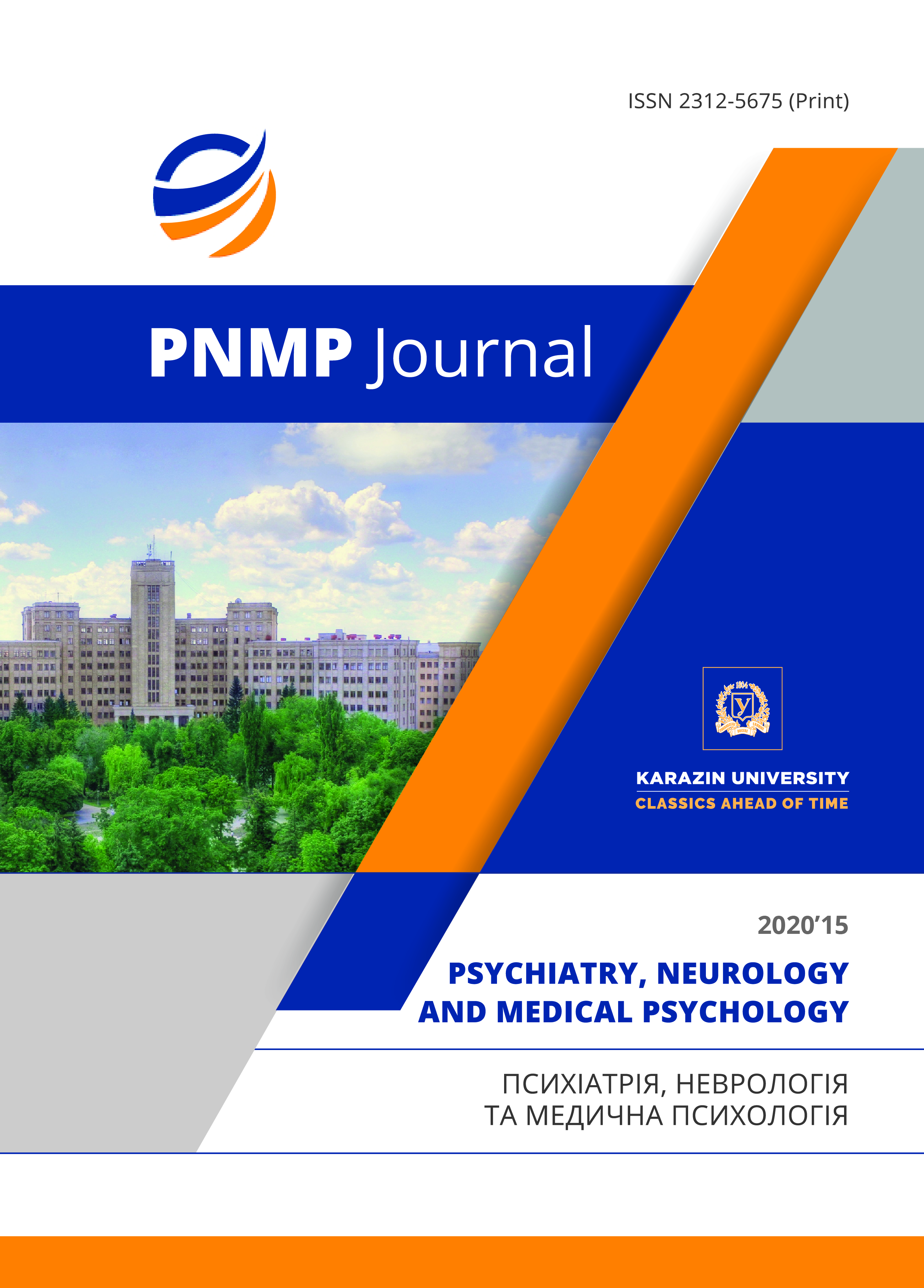Clinical neurological and neuro-orthopedic characteristics of patients with vertebral artery syndrome of extravasal genesis
Abstract
The article presents the results of clinical neurological and neuro-orthopedic examination of 48 patients with symptoms of vertebrobasilar insufficiency associated with complications of osteochondrosis. The main clinical syndromes that were observed in this group of patients were highlighted, the general characteristics of cardiovascular pathology, changes in brain during MRI examination and the severity of arterial sclerotic disease during ultrasound examination of the main arteries of the head and neck was given. On the basis of neuro-orthopedic examination of the cervical spine, specifically during examination of the active and passive range of movements, functional disorders in the form of restriction of movements were defined. By means of palpation, provocative and specific tests for certain motor segments, the main etiopathogenetic mechanisms of these disorders were identified.
The program of clinical treatment was based on medical history, assessment of factors in the diagnosis of heart disease, analysis of cerebral blood circulation disorders in anamnesis, as well as provocative factors, which were overwhelmed by development. Surrounding the neuro-orthopedic examination of the neuro-orthopedic examination. The withers, they swallowed respect for a volume of rugs in the sheer ridge, conducted the Glison test, provocative tests on movements segments, palpation and percussion.
The main types of postural disorders in patients with vertebral artery syndrome of extravasal origin have been investigated. As a result of clinical and neuro-orthopedic comparison, a higher frequency of Barre-Lieou syndromes, vestibulo-ataxic and vestibulo-cochlear disorders in patients with round posture was found, while the syndrome of ophthalmic disorders was observed with equal frequency in patients with round (70,8%) and round-incurvate (74,0%) posture and significantly more often compared to the group of patients with normal posture (49,9%). Vestibulo-ataxic syndrome was significantly more frequent at suspicion on facet syndrome or uncovertebral arthrosis (58,8%) in comparison with the group of patients with suspicion on protrusion / herniated intervertebral disc (11,8%).
Downloads
References
Sulik R.V. and Sulik V.V. Etiopathogenetic analysis of patients with spinal artery syndrome. Collection of scientific works of Shupyk National Medical Academy of Postgraduate Education (Shupyk NMAPE). 2010, no. 19 (3), pp. 454–458. [in Ukr.]
Morozova O. G., Yaroshevskiy A.A., Zdyibskiy V.I., Logvinenko A.V. The use of complex therapy for the correction of vestibular disorders in patients with vertebral artery syndrome. International Medical Journal. 2016, vol. 22, no. 3, pp. 72–76. [in Russ.]
Koshkin A.A. and Guzalov P.I. Forgotten eponym: Barre-Lieu syndrome (literature review). Bulletin of restorative medicine. 2020, no. 1, pp. 61–71. [in Russ.]
Seleznev A.N., Daminov V.D., Galnyikina A.S., Savin A.A. Correction of psychoemotional changes, autonomic dysfunction and sleep disorders in patients with cervical dorsopathy. Bulletin of restorative medicine. 2015, no. 1 (65), pp. 8 – 13. [in Russ.]
Li J., Gu T., Yang H., Liang L., Jiang D., Wang Z., Yuan W., Wang X. Sympathetic nerve innervation in cervical posterior longitudinal ligament as a potential causative factor in cervical spondylosis with sympathetic symptoms and preliminary evidence”. Medical Hypotheses. 2014, no. 82 (5), pp. 631–635.
Li Y. and Peng B. Pathogenesis, Diagnosis, and Treatment of Cervical Vertigo. Pain physician. 2015, no. 18 (4), pp. 583–595.
Bolotov D.D., Golovina T.V., Yushko A.A. Optimizaciya algoritma reabilitacionnyh meropriyatij u pacientov s dorsopatiyami. Vestnik vosstanovitel’noj mediciny. 2016, no. 2 (72), pp. 38–44. [in Russ.]
Li J., Jiang D., Wang X., Yuan W., Liang L., Wang Z. Mid-term outcomes of anterior cervical fusion for cervical spondylosis with sympathetic symptoms. Clinical Spine Surgery. 2016, no. 29 (6), pp. 255–260.

